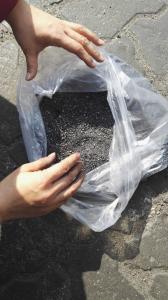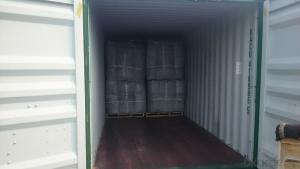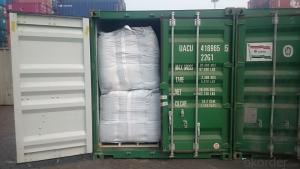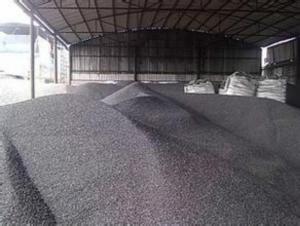GPC with lower Sulphur0.03% max with High Carbon
- Loading Port:
- Tianjin
- Payment Terms:
- TT OR LC
- Min Order Qty:
- 26 m.t.
- Supply Capability:
- 5006 m.t./month
OKorder Service Pledge
OKorder Financial Service
You Might Also Like
Introduction:
GPC has good characteristics with low ash, low resistivity, low sulphur, high carbon and high density. It is the best material for high quality carbon products. It is used as carbon additive in steel industry or fuel.
Features:
1.Our strong team provide you reliable service that make you feel purchasing is more easierit is playing more and more important role in the industry
2. We ensure that we can supply capability with competitive price.
3. Work strictly to guarantee product quality, it is playing more and more important role in the industry
4. Highest standard of integrity. Guarantee customer's benefit.
5. Supplying Pet Coke, Met coke, Foundry Coke, Carbon Raiser etc.
Specifications:
F.C.% | 95MIN | 94MIN | 93MIN | 92MIN | 90MIN | 85MIN | 84MIN |
ASH % | 4MAX | 5MAX | 6 MAX | 6.5MAX | 8.5MAX | 12MAX | 13MAX |
V.M.% | 1 MAX | 1MAX | 1.0MAX | 1.5MAX | 1.5MAX | 3 MAX | 3 MAX |
SULFUR % | 0.3MAX | 0.3MAX | 0.3MAX | 0.35MAX | 0.35MAX | 0.5MAX | 0.5MAX |
MOISTURE % | 0.5MAX | 0.5MAX | 0.5MAX | 0.5MAX | 0.5MAX | 1MAX | 1MAX |
Pictures
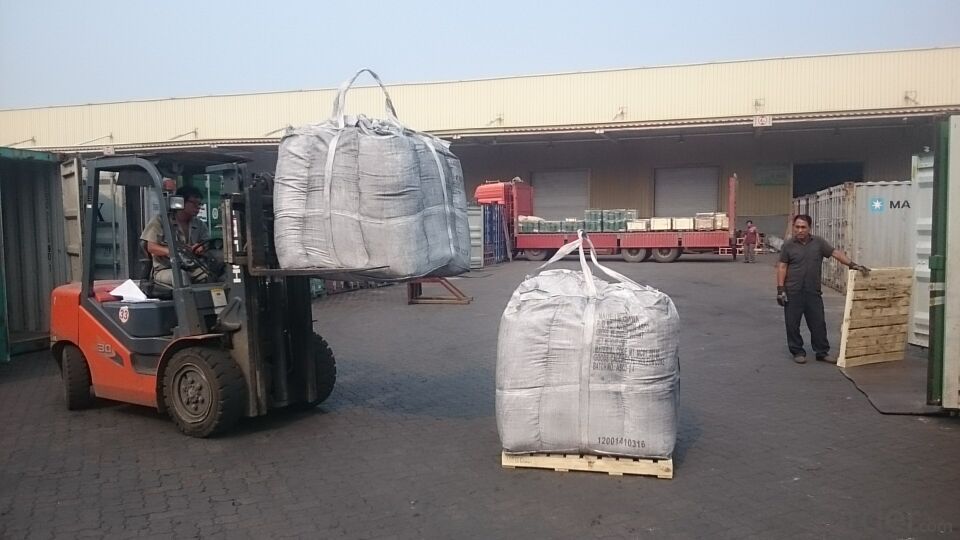

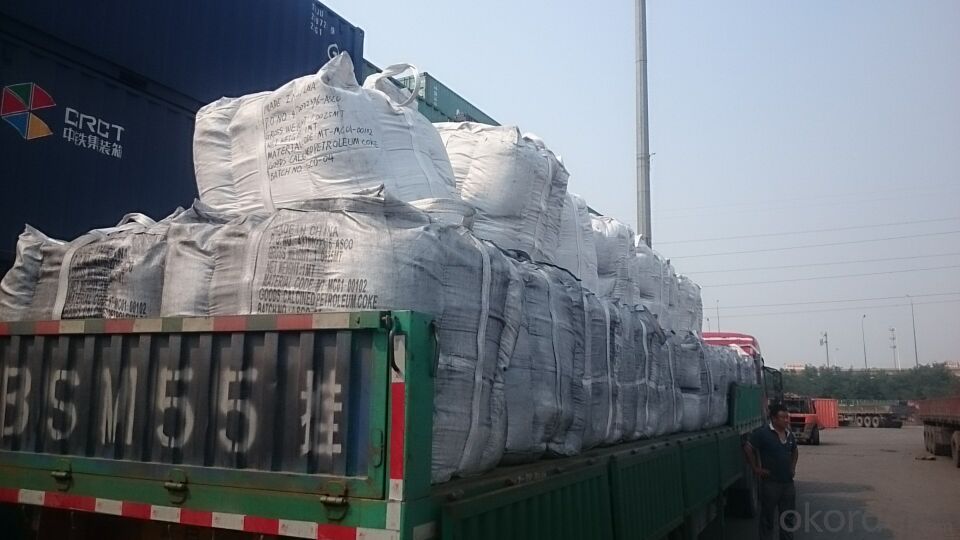
FAQ:
1. Your specification is not very suitable for us.
Please offer us specific indicators by TM or email. We will give you feedback as soon as possible.
2. When can I get the price?
We usually quote within 24 hours after getting your detailed requirements, like size, quantity etc. .
If it is an urgent order, you can call us directly.
3. Do you provide samples?
Yes, samples are available for you to check our quality.
Samples delivery time will be about 3-10 days.
4. What about the lead time for mass product?
The lead time is based on the quantity, about 7-15 days. For graphite product, apply Dual-use items license need about 15-20 working days.
5. What is your terms of delivery?
We accept FOB, CFR, CIF, EXW, etc. You can choose the most convenient way for you. Besides that,
we can also shipping by Air and Express.
6. Product packaging?
We are packed in bulk ship or in ton bag or placing in container or according to your requirements.
7. Notice
please note that the price on Alibaba is a rough price. The actual price will depends on raw materials, exchange rate wage and your order quantity .Hope to cooperation with you, thanks !
- Q: How does carbon contribute to the structure of DNA?
- The structure of DNA relies heavily on carbon, as it plays a critical role in its composition. Carbon is a crucial element in the formation of the sugar-phosphate backbone, which is an integral part of the DNA molecule. This backbone consists of alternating sugar and phosphate molecules, with the sugar molecule being deoxyribose in DNA. Deoxyribose sugar contains five carbon atoms, making carbon a significant component in its structure. These carbon atoms provide stability and rigidity to the backbone, ensuring the overall structure of the DNA molecule remains intact. Additionally, carbon also contributes to the formation of the nitrogenous bases that form the ladder-like structure of DNA. There are four nitrogenous bases in DNA: adenine (A), guanine (G), cytosine (C), and thymine (T). Carbon atoms are present in the structure of each of these bases, giving them their distinct chemical properties. Various functional groups containing carbon, such as amino and keto groups, actively participate in hydrogen bonding and stacking interactions that determine the base pairing within the DNA double helix. To summarize, carbon is an indispensable element in the structure of DNA. It not only provides stability and rigidity to the sugar-phosphate backbone but also plays a crucial role in the formation of the nitrogenous bases. The unique properties of carbon enable DNA to maintain its double helix structure and facilitate the accurate transmission of genetic information.
- Q: What are the effects of carbon emissions on the stability of volcanic regions?
- The stability of volcanic regions can be influenced by both direct and indirect effects of carbon emissions. At first glance, the direct impact of carbon emissions on volcanic areas seems relatively insignificant. Volcanic eruptions naturally release carbon dioxide (CO2), so the additional emissions from human activities may not have a significant individual effect on the stability of volcanic regions. However, the increased levels of carbon dioxide in the atmosphere can contribute to climate change, which can indirectly affect volcanic activity. Indirectly, the stability of volcanic regions can be affected by climate change resulting from carbon emissions. The rising global temperatures caused by climate change can lead to the melting of glaciers and ice caps. This, in turn, increases the amount of water on the Earth's surface. The additional weight of water in volcanic areas can potentially add pressure to magma chambers and trigger volcanic activity. Moreover, the increased water levels can result in higher levels of rainfall, which increases the risk of landslides and erosion in volcanic regions, potentially destabilizing the area. Additionally, climate change can alter precipitation patterns and create drought conditions, impacting the hydrological cycle. These changes can affect the availability of water for volcanic regions, ultimately influencing their stability. Volcanoes require water for the production of steam and pressure that can lead to eruptions. If there is a lack of water due to prolonged drought conditions, volcanic activity may decrease. However, unpredictable rainfall patterns can result in an excess of water, leading to an increased risk of flash floods and landslides that can destabilize volcanic areas. It is important to acknowledge that the effects of carbon emissions on the stability of volcanic regions are intricate and can vary based on factors such as local geology, volcanic activity, and climate conditions. Although carbon emissions may not directly cause volcanic eruptions, they can contribute to changes in climate patterns that can indirectly impact the stability of volcanic systems. Further research and monitoring are necessary to fully comprehend and quantify these effects.
- Q: What are the properties of carbon fibers?
- Carbon fibers possess a range of remarkable attributes, rendering them a distinctive and adaptable material. One noteworthy characteristic is their exceptional strength-to-weight ratio. Carbon fibers exhibit tremendous strength, often surpassing that of steel, while also being significantly lighter. This quality makes them exceptionally well-suited for industries such as aerospace and automotive, where high strength and low weight are essential. Another significant attribute of carbon fibers is their stiffness. They possess a high degree of rigidity, ensuring minimal deformation when subjected to applied loads. This property proves advantageous in applications that require stability and rigidity, such as the construction of sporting goods like tennis rackets or golf clubs. Additionally, carbon fibers display outstanding resistance to chemical corrosion. They exhibit a high level of resistance to the detrimental effects of chemicals or corrosive substances, making them highly suitable for use in harsh environments. Industries such as chemistry or offshore structures prefer carbon fibers due to this property. Furthermore, carbon fibers have a low thermal expansion coefficient, indicating minimal expansion when exposed to heat. This characteristic is vital in applications where thermal stability is crucial, such as the manufacturing of high-temperature components like turbine blades or heat shields. Moreover, carbon fibers possess excellent fatigue resistance, enabling them to endure repeated loading and unloading cycles without significant damage. This attribute is particularly advantageous in applications subjected to cyclic or dynamic stresses, including the construction of sports equipment or aerospace structures. Lastly, carbon fibers exhibit excellent electrical conductivity. They efficiently conduct electricity, making them suitable for applications that require electrical conductivity, such as lightning strike protection in the aerospace industry or the production of electronic devices. In summary, the high strength-to-weight ratio, stiffness, chemical resistance, low thermal expansion, fatigue resistance, and electrical conductivity of carbon fibers establish them as a highly sought-after material in various industries.
- Q: How can individuals reduce their carbon footprint?
- Achieving a more sustainable future and reducing our carbon footprint can be accomplished through various actions. Consider the following effective methods: 1. Energy consumption reduction: The conservation of energy plays a vital role in decreasing carbon emissions. Make the switch to energy-efficient appliances, turn off lights when not in use, unplug electronics when not in use, and take advantage of natural lighting whenever possible. Additionally, adjusting thermostats to energy-saving temperatures and utilizing programmable thermostats can significantly decrease energy consumption. 2. Utilize renewable energy sources: A transition to renewable energy sources, such as solar or wind power, can drastically reduce carbon emissions. Install solar panels on rooftops, or explore the option of purchasing green energy from utility companies that provide renewable alternatives. 3. Decrease water usage: Indirectly, conserving water aids in reducing energy consumption and carbon emissions. Repair leaky faucets, shorten shower durations, install water-saving fixtures, and gather rainwater for outdoor activities. Additionally, consider implementing drought-resistant landscaping to minimize water usage for gardening purposes. 4. Consume mindfully: When making purchases, opt for sustainable choices. Select durable and long-lasting items, repair and reuse rather than replacing, and prioritize products made from recycled or sustainable materials. Furthermore, support local and sustainable businesses that prioritize eco-friendly practices. 5. Minimize transportation emissions: Reduce reliance on private vehicles by utilizing public transportation, carpooling, biking, or walking whenever feasible. If owning a car is necessary, choose electric or hybrid vehicles. Regular maintenance, proper tire inflation, and avoiding unnecessary idling all contribute to decreasing transportation emissions. 6. Embrace a plant-based diet: The food industry has a considerable carbon footprint, particularly due to livestock production. By reducing meat consumption or adopting a plant-based diet, carbon emissions can be significantly reduced while also offering health benefits. If a complete plant-based diet is not feasible, try incorporating more vegetarian or vegan meals into your eating habits. 7. Decrease waste generation: Waste contributes to greenhouse gas emissions, making waste reduction crucial. Opt for products with minimal packaging, diligently recycle, compost organic waste, and avoid single-use plastics. Plan meals, only purchase what is needed, and properly store leftovers to minimize food waste. 8. Support environmental initiatives and organizations: Engage with local and global organizations dedicated to environmental conservation. Take part in community clean-ups, support reforestation efforts, and advocate for sustainable practices in your workplace and community. By implementing these strategies into our daily lives, individuals can make a significant impact in reducing their carbon footprint and combating climate change. It is important to remember that every small action matters, and collectively, we can create a sustainable future for future generations.
- Q: How does carbon contribute to the color of gemstones?
- Carbon contributes to the color of gemstones through its ability to absorb certain wavelengths of light. When carbon is present in gemstones, it can create various color centers that give the gemstone its distinct hue, such as yellow in diamonds or blue in sapphires.
- Q: How does carbon contribute to the flavor of food?
- Carbon, in the form of charcoal or charred substances, can contribute to the flavor of food in several ways. Firstly, when food is grilled or roasted over charcoal, the carbon imparts a smoky flavor to the food, enhancing its taste and aroma. This smokiness is particularly desirable in foods like barbecued meats, vegetables, or even certain cheeses, as it adds a distinct and enjoyable element to the overall flavor profile. Furthermore, carbon can also act as a natural filter, absorbing and removing impurities from food and beverages. This filtration process can help eliminate unpleasant odors and flavors, resulting in a cleaner and more refined taste. For example, activated carbon is commonly used in the production of alcoholic beverages like whiskey or vodka to remove impurities and create a smoother, more flavorful drink. In addition, carbon can contribute to the development of desirable texture and color in certain foods. When sugar or other carbohydrates are heated, they undergo a process called caramelization, where the sugars react with heat to form a complex mixture of carbon compounds. This caramelization process creates rich, golden-brown hues and a unique depth of flavor, enhancing the overall taste experience. Lastly, carbon can also play a role in the fermentation process, which is essential in the production of various foods and beverages. During fermentation, microorganisms consume sugars and release carbon dioxide, which contributes to the texture, flavor, and carbonation of the final product. This is particularly evident in bread, beer, wine, and other fermented foods where the presence of carbon dioxide adds lightness, complexity, and effervescence to the flavor profile. In summary, carbon contributes to the flavor of food through its ability to impart smokiness, act as a natural filter, facilitate caramelization, and participate in fermentation processes. Its presence in various forms enhances the taste, texture, and overall enjoyment of a wide range of food and beverages.
- Q: How does carbon affect the fertility of soil?
- Soil fertility relies on carbon, which has a significant impact on various soil properties and processes. The addition of carbon to the soil improves its structure and ability to hold water. Organic matter, abundant in carbon, serves as a food source for microorganisms. These microorganisms play a crucial role in nutrient cycling and soil aggregation as they break down organic matter into simpler compounds. This process releases essential nutrients that plants can readily access. Furthermore, carbon acts as a sponge, preventing the leaching of nutrients like nitrogen and thereby increasing their availability for plants. Additionally, soils rich in carbon have higher cation exchange capacity, enabling them to retain and release nutrients more efficiently. By maintaining and increasing soil carbon levels, we can enhance soil fertility, facilitate plant growth, and support sustainable agricultural practices.
- Q: How is carbon used in the water treatment process?
- The water treatment process employs carbon in various ways. Activated carbon, which possesses a high porosity and a large surface area, is commonly utilized. This enables it to efficiently adsorb and eliminate impurities from water. Water treatment facilities often employ activated carbon in the form of granules, pellets, or blocks. It can be introduced at different stages of the treatment process. For instance, during the initial filtration stage, activated carbon can be utilized to eliminate particles that can affect the water's taste and smell, such as sediment and chlorine byproducts. Moreover, activated carbon is highly effective in eliminating organic compounds, including pesticides, herbicides, and industrial chemicals, that may exist in the water. The consumption of these compounds can be detrimental to human health, thus the use of activated carbon ensures the safety of drinking water. Another method in which carbon is employed in water treatment is through carbonation. This procedure involves injecting carbon dioxide gas into the water, which aids in reducing its pH level. Carbonation is commonly employed in the treatment of alkaline water sources, as it neutralizes the water and makes it more suitable for consumption. In conclusion, carbon plays a vital role in the water treatment process as it efficiently removes impurities and enhances the quality of drinking water. Its ability to adsorb makes it an invaluable tool in guaranteeing the safety and healthiness of water.
- Q: What is the role of carbon in the human body?
- Carbon plays a crucial role in the human body as it is a fundamental element for all organic molecules. It is the backbone of many biomolecules, including carbohydrates, lipids, proteins, and nucleic acids, which are essential for various physiological processes. Firstly, carbon is a key component of carbohydrates, which are the primary source of energy for the body. Glucose, a simple sugar composed of carbon, hydrogen, and oxygen, is broken down in cells to release energy through cellular respiration. Additionally, carbon forms the structure of complex carbohydrates like glycogen, which is stored in the liver and muscles as an energy reserve. Secondly, carbon is present in lipids, such as fats and oils, which serve as an energy source, insulation, and protection for organs. Carbon atoms are arranged in long hydrocarbon chains, making lipids hydrophobic and allowing them to store and release energy efficiently. Lipids also play a crucial role in cell membrane structure and hormone production. Furthermore, carbon is a fundamental component of proteins, which are involved in almost all cellular processes. Proteins are composed of amino acids, and carbon atoms form the backbone of these amino acids, providing stability and flexibility to the protein structure. Carbon also participates in the formation of peptide bonds, which link amino acids together to build proteins. Proteins are essential for various functions, including enzyme catalysis, transport and storage of molecules, immune response, and cell signaling. Lastly, carbon is a vital element in nucleic acids, such as DNA and RNA, which contain genetic information. Carbon atoms form the sugar-phosphate backbone of nucleic acids, providing stability to the structure. DNA carries hereditary information, while RNA plays a crucial role in protein synthesis. In summary, carbon is essential in the human body as it forms the basis of organic molecules like carbohydrates, lipids, proteins, and nucleic acids. Its versatility and ability to form stable bonds allow for the diverse functions and structures necessary for life processes.
- Q: Today in the market to buy Yuba, instructions have such a word that I don't understand, please master Zhijiao: carbon fiber after energized carbon molecule formation of Brown movement, this movement can be effective in most of the electrical energy into the far infrared.
- When it is energized, its motion intensifies, the frequency becomes V2, and the frequency becomes larger, the vibration system is unstable and the frequency is back to its original frequency. So you have to release energy in the form of electromagnetic waves. I am not too clear about the specific release process. I know that the molecules do slow motion and generate additional electromagnetic waves. The frequency of the extra electromagnetic wave emitted is v2-v1, and its frequency falls in the far infrared region.
Send your message to us
GPC with lower Sulphur0.03% max with High Carbon
- Loading Port:
- Tianjin
- Payment Terms:
- TT OR LC
- Min Order Qty:
- 26 m.t.
- Supply Capability:
- 5006 m.t./month
OKorder Service Pledge
OKorder Financial Service
Similar products
Hot products
Hot Searches
